The Cardiovascular System: Vessels and Circulation
1/39
There's no tags or description
Looks like no tags are added yet.
Name | Mastery | Learn | Test | Matching | Spaced |
|---|
No study sessions yet.
40 Terms
What are the two groups of blood vessels in the cardiovascular system?
arteries and veins
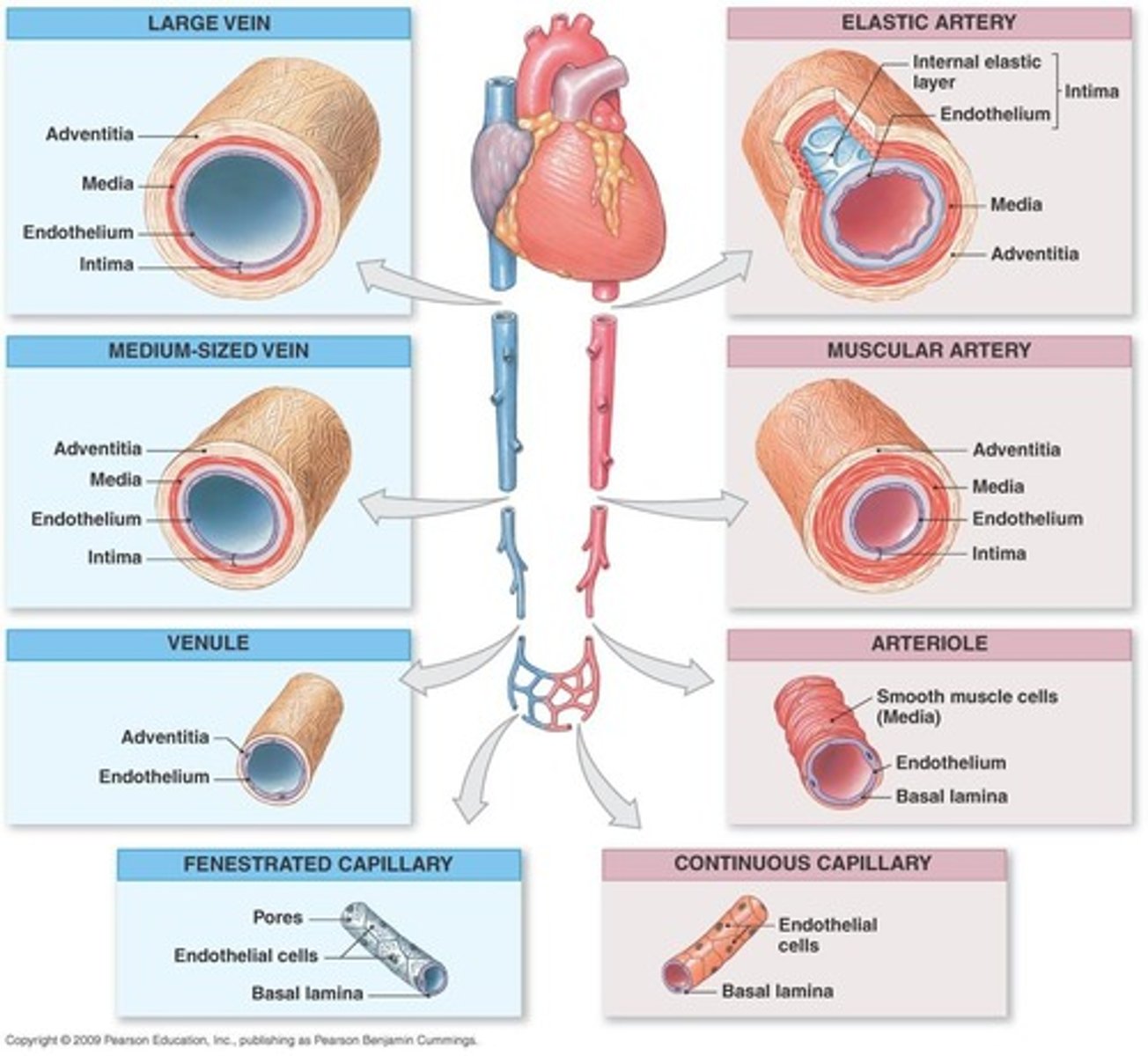
What does the cardiovascular system do?
It is a closed system that circulates blood.
What are the three layers of blood vessel walls?
Tunica intima (inner layer), tunica media (middle layer), and adventitia (outer layer).
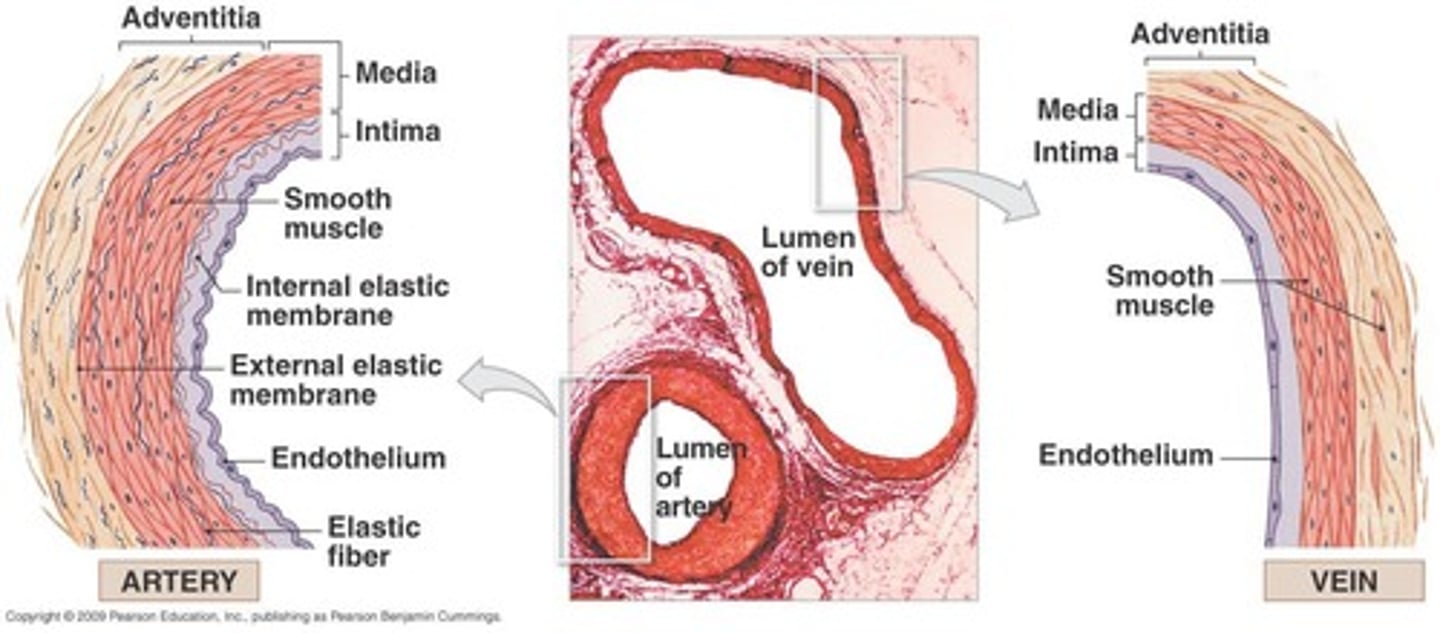
What is the function of the tunica intima?
It is the inner layer of blood vessels, consisting of endothelium and connective tissue.
What is the composition of the tunica media?
It is the middle layer made up of smooth muscle and connective tissue.
What primarily makes up the adventitia?
It is mostly composed of connective tissue.
What are elastic arteries?
Large vessels with diameters of up to 2.5 cm (1 in.) that function as conducting arteries.
What are muscular arteries?
Medium-sized arteries that transport blood to the body's skeletal muscle and internal organs.
What are arterioles?
Small arteries that are considerably smaller than muscular arteries, averaging about 30 μm in diameter.
What are capillaries?
The smallest and most delicate blood vessels that permit exchange between blood and surrounding interstitial fluids.
What are the three types of capillaries?
Continuous, fenestrated, and sinusoids.
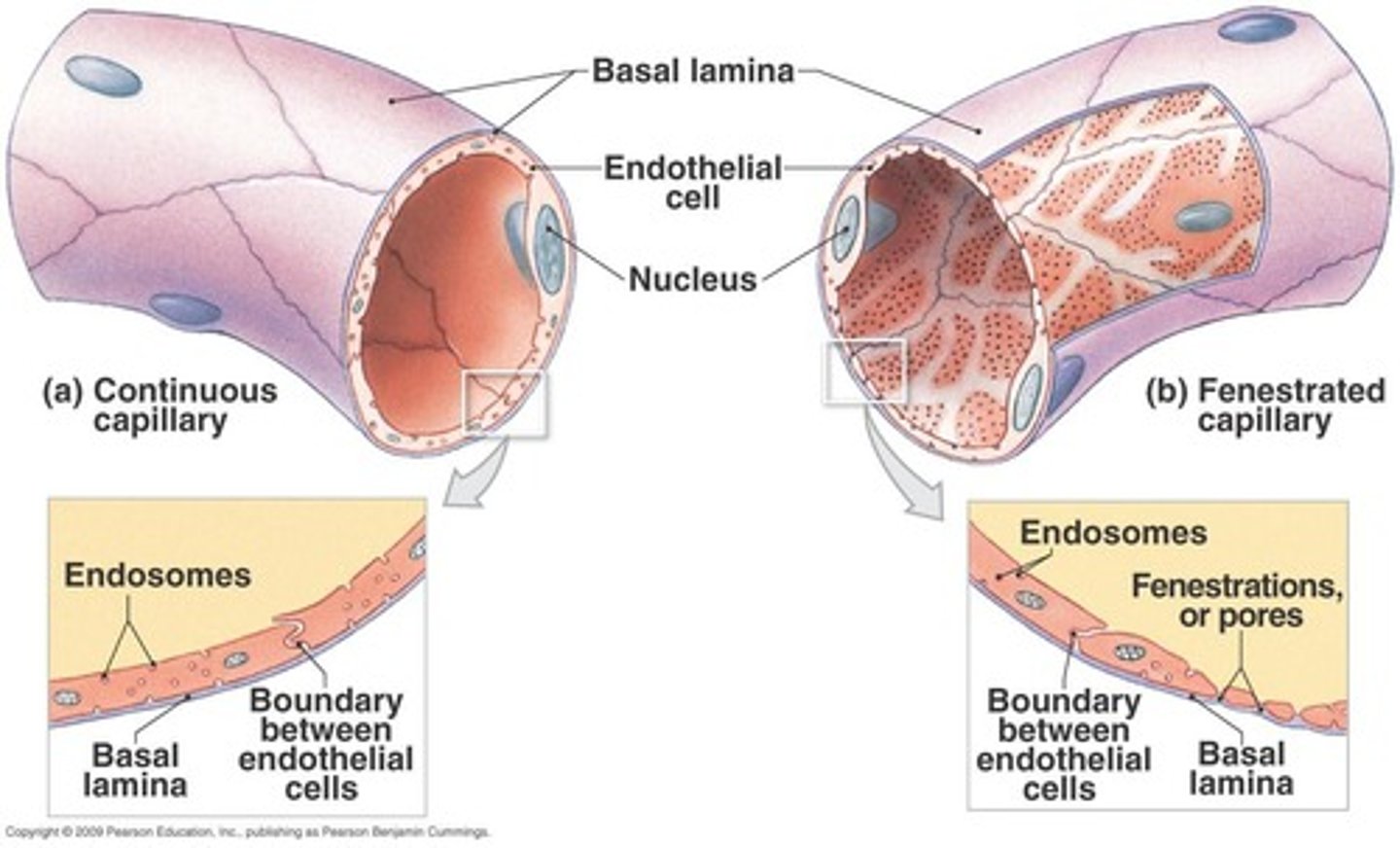
What characterizes continuous capillaries?
They have a complete endothelial lining.
What are fenestrated capillaries?
Capillaries that contain 'windows' in their walls due to a perforated endothelial lining.
What are sinusoids?
Specialized fenestrated capillaries found in selected tissues, such as the liver, allowing very slow blood flow.
What are large veins?
They include the great veins, the superior and inferior venae cavae, and their tributaries within the abdominopelvic and thoracic cavities.
What is an anastomotic connection in blood vessels?
It is a connection that reduces the impact of blockage of a single vessel.
What is the role of valves in the venous system?
They help prevent the backflow of blood.
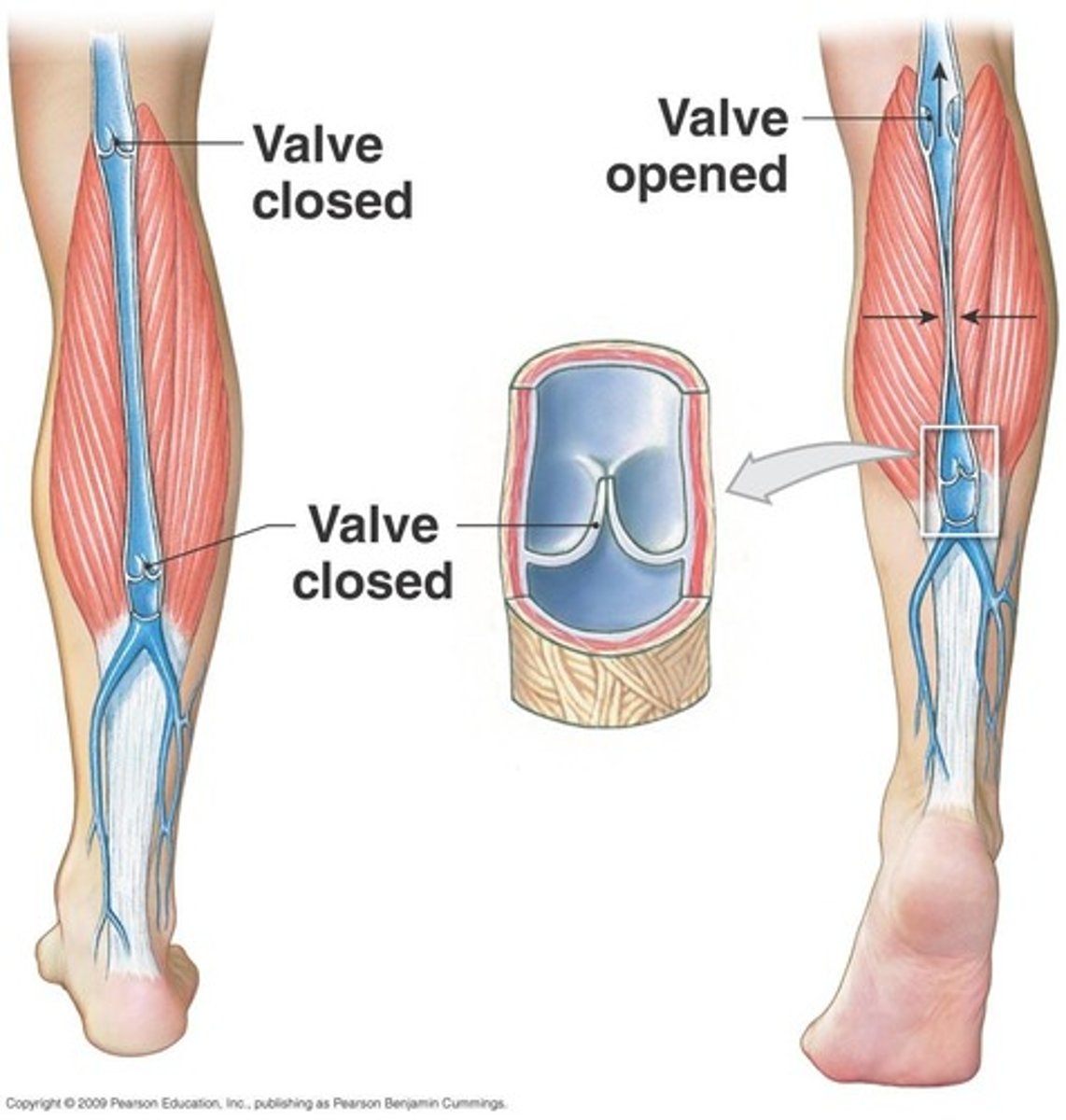
What is the significance of the histological organization of blood vessels?
It helps in understanding the structure and function of different types of blood vessels.
What is the function of the pulmonary circuit?
Carries deoxygenated blood to the lungs and back to the heart.
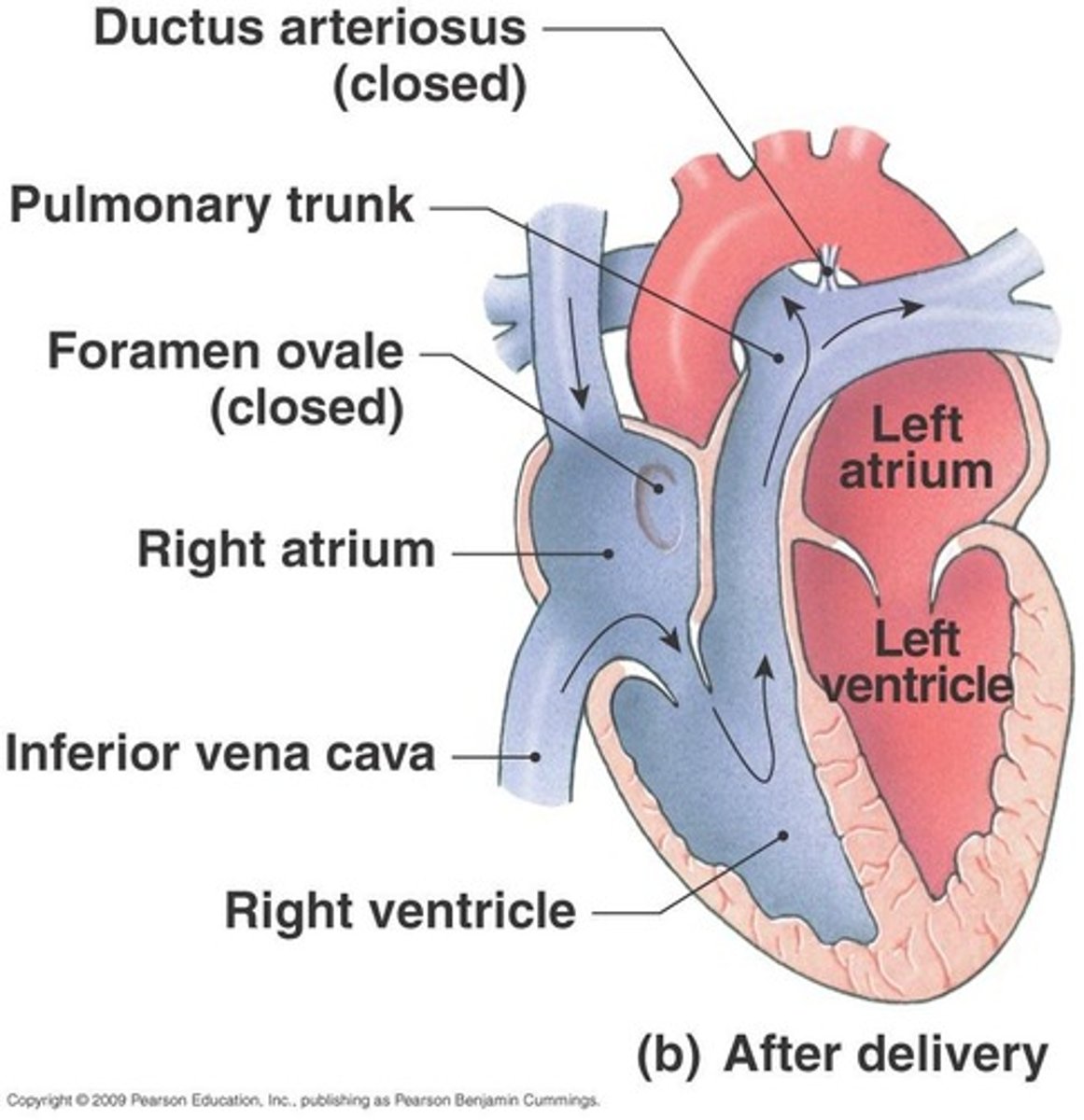
What are the main components of the pulmonary circuit?
Includes the pulmonary trunk, left and right pulmonary arteries, and pulmonary veins.
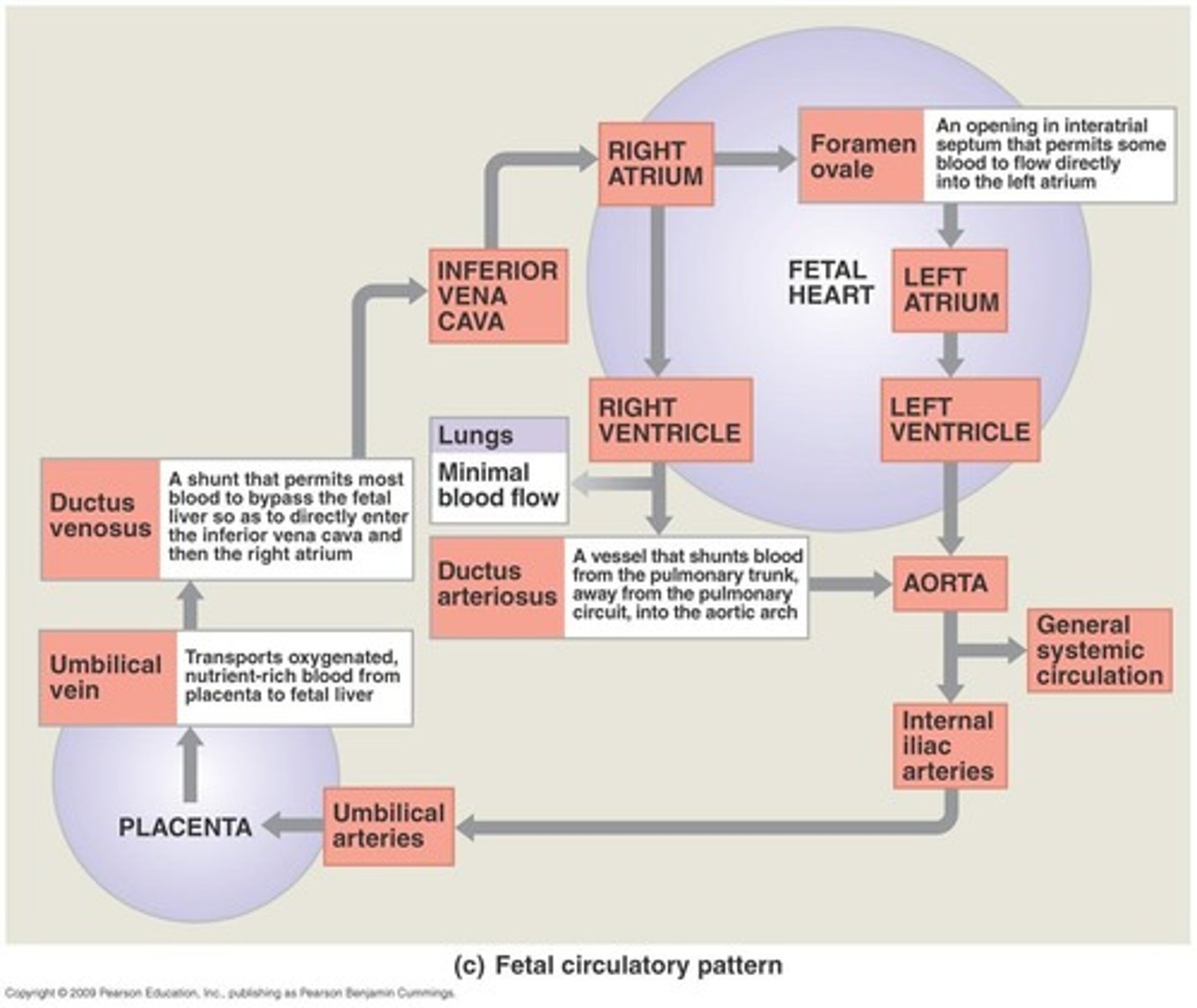
What is the function of the systemic circuit?
Carries oxygenated blood to the body tissues.
What is included in the systemic circuit?
Includes the coronary circuit, which supplies the myocardium.
What are some changes in blood as people age?
Decreased hematocrit (HCT), increased formation of thrombi and emboli, and blood pooling in the legs.
What changes occur in the heart with aging?
Reduced efficiency and elasticity, atherosclerosis of coronary vessels, and formation of scar tissue.
What changes occur in blood vessels as one ages?
Loss of elasticity and calcium deposits that damage vessel walls.
What is the significance of the coronary circuit?
It supplies blood to the myocardium (heart muscle).
What is the role of the hepatic portal system?
It carries blood from the gastrointestinal tract and spleen to the liver.
What are the major arteries of the neck?
Includes the common carotid arteries and vertebral arteries.
What are the major arteries supplying the brain?
Includes the internal carotid arteries and vertebral arteries.
What does the aortic angiogram illustrate?
It shows the anatomy and distribution of the aorta and its branches.
What is the purpose of the venous drainage system?
To return deoxygenated blood back to the heart.
What are the major veins of the head and neck?
Includes the internal jugular veins and external jugular veins.
What is a common issue with aging blood vessels?
They lose elasticity and may develop calcium deposits.
What is atherosclerosis?
A condition characterized by the hardening and narrowing of the arteries due to plaque buildup.
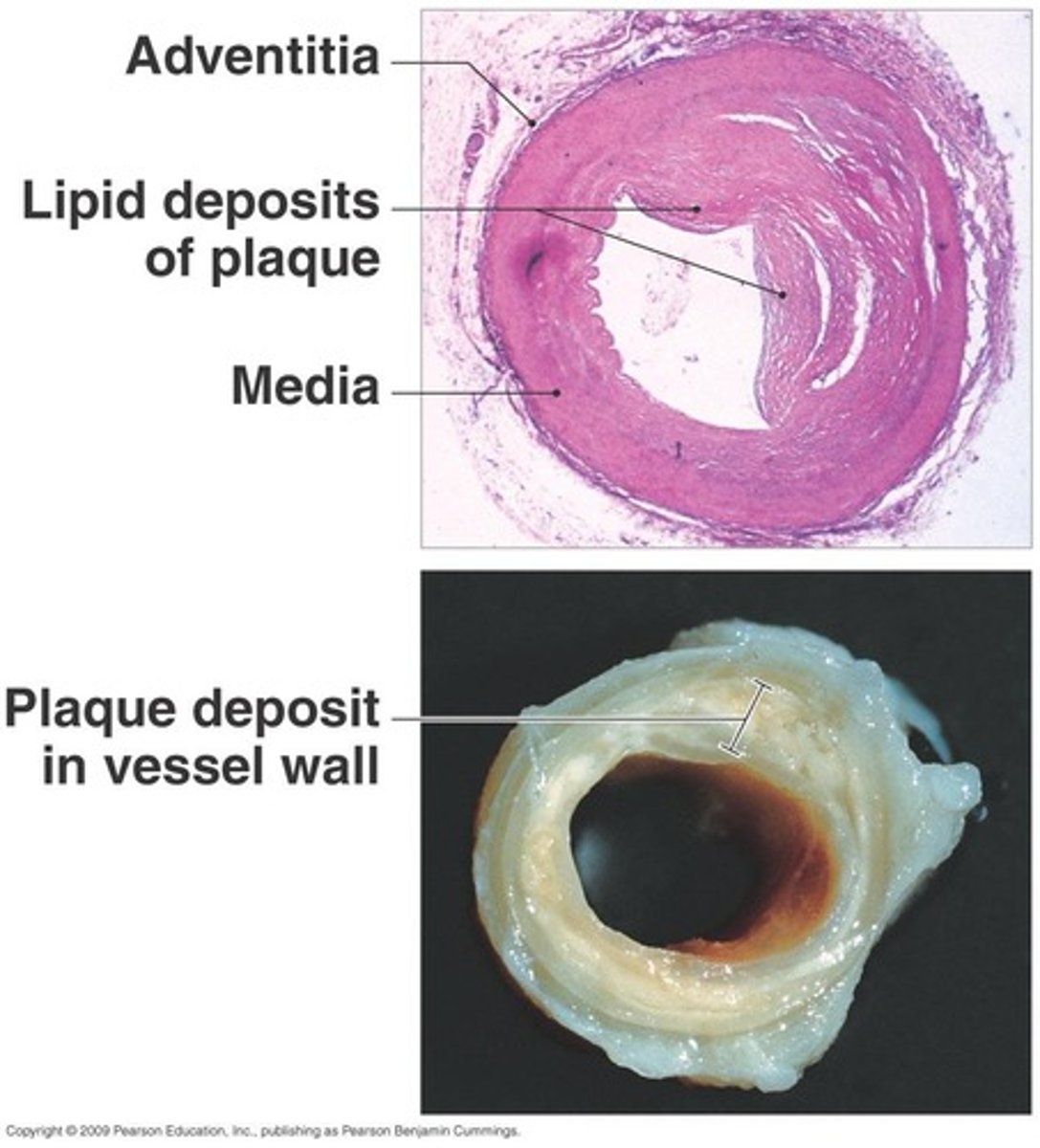
What happens to blood flow in the legs as people age?
Blood tends to pool in the legs due to decreased circulation.
What is the significance of the pulmonary veins?
They carry oxygenated blood from the lungs back to the heart.
What is the role of the pulmonary trunk?
It carries deoxygenated blood from the heart to the lungs.
What are thrombi and emboli?
Thrombi are blood clots that form in a blood vessel, while emboli are clots that travel through the bloodstream.
What is the role of the coronary arteries?
To supply blood to the heart muscle itself.
What are the consequences of reduced heart efficiency with aging?
Increased risk of heart disease and reduced physical capacity.